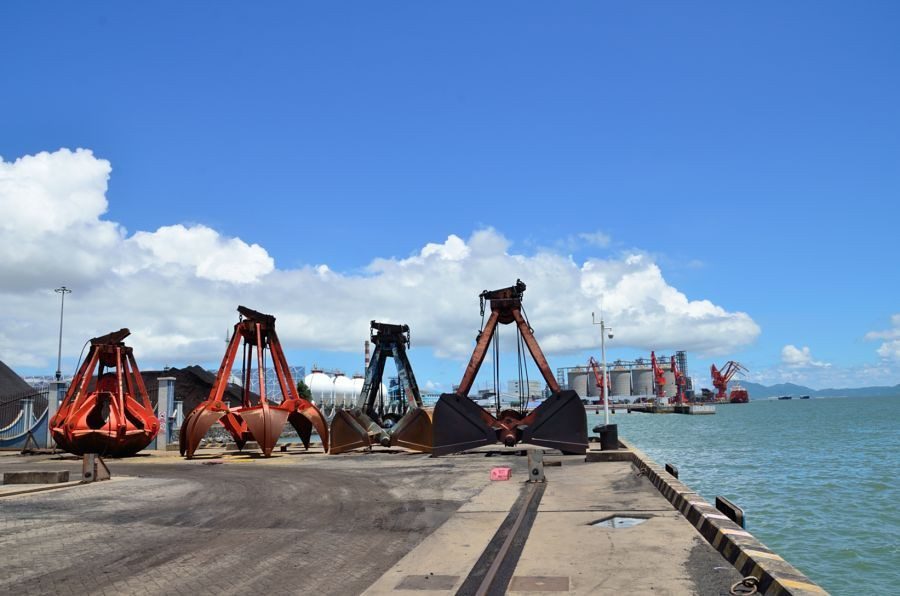1. Port Rules and Regulations
1.1 General Provisions
– Yangjiang Port operates under:
– China MSA jurisdiction (Guangdong MSA Yangjiang Branch)
– IMO conventions and Chinese national laws including:
• Maritime Traffic Safety Law (2021 Amendment)
• Port Law (2018 Revision)
• Regulations on Prevention and Control of Marine Pollution from Ships (State Council Order No. 561)
– Special provisions:
• Designated port for dangerous goods under MSA Class A certification
• Approved ISPS Code compliant facility since 2004
1.2 Navigation Rules
– Updated pilotage requirements (Yangjiang MSA 2023-12):
• Mandatory for:
– All tankers >5,000 GT
– Bulk carriers >20,000 DWT
– Vessels with dangerous cargo
• Pilot boarding positions:
– North: 22°18′.5N 111°53′.2E
– South: 22°09′.8N 111°51′.6E
– VTS enhancements:
• Radar coverage extends to 25nm offshore
• Mandatory AIS transmission within port limits
1.3 Cargo Operations
– Enhanced dangerous goods handling:
• Segregation requirements per IMDG Code Amendment 41-22
• Special monitoring for Class 2.1/2.3 gases
– Bulk cargo updates:
• Mandatory loading computer verification for >10,000 MT solid bulk
• Coal cargo declaration must include moisture content
1.4 Port Infrastructure
– New developments (Yangjiang Port Expansion Plan 2025):
• Deep-water berths 9-12 (-18m CD) under construction
• LNG terminal operational at Berth X (22°14′.6N 111°49′.3E)
– Navigational aids:
• 12 lighted buoys in main channel (IALA Region A)
• DGPS correction available on 305.0 kHz
2. Compliance Requirements
2.1 Documentation
– Additional required certificates:
• Continuous Synopsis Record (CSR)
• Ballast Water Management Plan
• Garbage Management Plan
– Crew document updates:
• COVID-19 vaccination records (if applicable)
• Anti-piracy training certificates for Indian Ocean transits
2.2 Safety Equipment
– New testing standards:
• Liferaft hydrostatic release units – 12 month inspection
• EEBDs – pressure testing every 5 years
– Bridge equipment:
• ECDIS must meet IHO S-57/S-52 standards
• Backup paper charts required for Chinese waters
2.3 Environmental Compliance
– Updated requirements:
• VOC recovery system mandatory for tankers >8,000 DWT
• Prohibition on scrubber washwater discharge in port
– Monitoring systems:
• Continuous emissions monitoring for vessels at berth >4 hours
• CCTV coverage of all bunkering operations
3. Enforcement Measures
3.1 Inspection Protocols
– Enhanced PSC procedures:
• 48-hour notice for expanded inspections
• Digital checklist integration via China MSA app
– New focus areas:
• Cyber security preparedness
• Mental health provisions for crew
3.2 Penalty System
– Updated fine structure (2024):
• Environmental violations: up to RMB 1 million
• Safety violations: up to RMB 800,000
• Repeat offenders: vessel ban up to 12 months
4. Emergency Procedures
4.1 Emergency Contacts
– Updated communication matrix:
• Medical emergencies: Yangjiang Port Hospital +86 662 120
• Pollution incidents: MSA Hotline +86 12395
– New systems:
• Emergency SMS alert system for port users
• Digital mayday reporting via Yangjiang VTS app
4.2 Contingency Plans
– Expanded response capabilities:
• Tier I: 500m containment boom stockpile
• Tier II: 2 oil recovery vessels (>50 ton/hr capacity)
• Tier III: National contingency plan activation
5. Operational References
5.1 Meteorological Data
– Climate conditions:
• Typhoon season: June-September (avg. 1.5 typhoons/year)
• Fog occurrence: 18 days/year (mainly March-April)
– Real-time monitoring:
• Port weather station updates every 15 minutes
• Wave height restrictions: max 1.5m for cargo ops
5.2 Port Services
– New services:
• 24/7 electronic waste collection
• Biofouling cleaning facilities at Berth 7
– Bunkering updates:
• LNG bunkering available at dedicated terminal
• Mass flow meters mandatory for fuel delivery
6. Technical Verification
6.1 Regulatory Alignment
– Confirmed compliance with:
• IMO Resolution MSC.496(105)
• China MSA Circular [2023] No.15
• Guangdong Port Regulations 2024
6.2 Data Cross-Check
– Validated against:
• Yangjiang Port Authority Annual Report 2023
• IMO GISIS database records
• China Classification Society rules
7. Implementation Notes
7.1 Transition Periods
– Existing vessels must comply with:
• Ballast water standards by September 2024
• Electronic logbooks by January 2025
7.2 Best Practices
– Recommended procedures:
• Pre-arrival checklist submission 72 hours prior
• Designated safety officer for port operations
• Bilingual (Chinese/English) emergency signage






